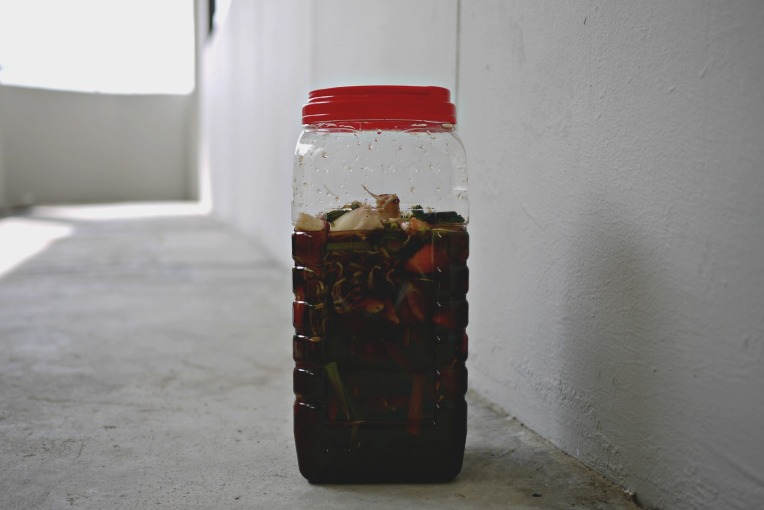
I started making Eco enzyme during Chinese New Year when I cumulated quite a lot of mandarin orange peels. Eco enzyme is a mixture of 3 ingredients: fresh fruit or vegetable scraps, sugar, and water that goes through 3 months of fermentation and then turns into a vinegar based eco detergent that has many uses around the household. While finding out how Eco Enzyme works, I read that the term eco enzyme is more of a “colloquial term” than a real enzyme product.
The real enzyme is probably what Tampines estate is using to kill their cockroaches when they recently announced that they will be going the enzyme route as a more effective form of pest control treatment, after a month-long trial last year showed positive results. I had to admit that I cringed a little when I saw the reporter licking off the enzyme solution from her finger to show that it is edible and completely safe. Then again, how I wish that everything we wash down our drain should be as safe as this. I always thought that for a population that counts a small part of our drinking water from reclaimed sewage water, we should be more wary of the chemicals that we wash down our drains. But of course, the water treatment technology is more sophisticated and advanced that I think. Still, I prefer less harsh chemical detergents around the house, and even better, make one on our own with ingredients that we know are safe.
The Eco enzyme I made is not for consumption purpose. And there are only 3 steps. The initial time spent on mixing the ingredients takes less than 5 minutes, then we leave the rest to Science to break down the scraps and turn it into an environmentally friendly household cleaning solution. Here’s how:
Step 1 : Gather a plastic container with a lid, fresh vegetable and fruit scraps, black or brown jaggery sugar, and water.
Step 2 : Fill up the container with 10 parts water, stir and dilute 1 part sugar, then top with 3 parts of fruit peels and vegetable scraps and stir again to mix well. Leave enough gap in the covered container for air to expand during the fermentation process. Cover the container, keep it slightly loose, not screwed too tightly and leave this in a cool area away from the sun for 3 months.
Step 3 : Filter to extract liquid enzyme. I use a coffee filter bag with wire handle for this job. Store the Eco enzyme in plastic bottles and dilute according to usage. The residue that has been filtered out are useful as plant fertilizer.
After reading up, making and applying the Eco enzyme in household cleaning, following are some tips and links that I have penned down/bookmarked during my DIY Eco enzyme journey and hope that you will find it useful as well.
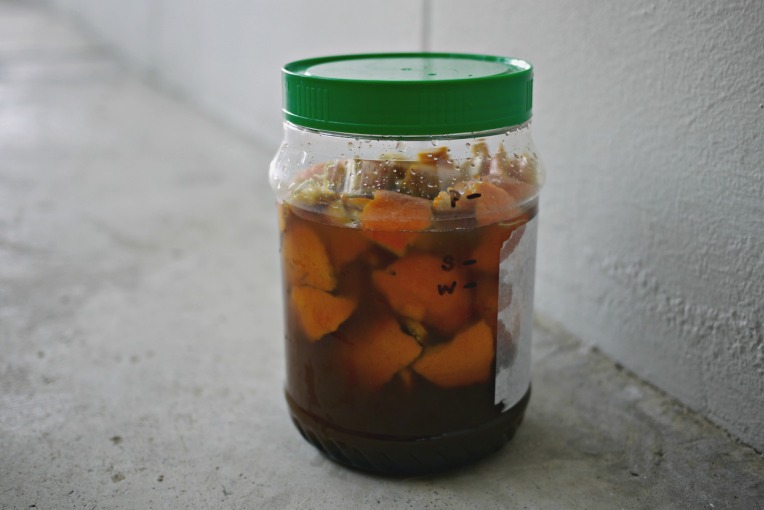
+ Why plastic container?
Gas will build up during the fermentation process might cause a glass container to explode. Even though plastic ones are safer, always leave a gap inside the container when filling up the ingredients. Also, for the first month, open the cover to let build up gas escape every day when fermentation is most active. On certain days, I can even hear a fizzing sound of air escaping as I unscrew to open the lid. After 1 month, check on the eco enzyme once a month. Stir the solution to keep everything well mixed once a while.
+ Any preferred vegetables or fruits to use?
Citrus based fruit peels make the best smelling eco enzyme. For my first batch, I added 100% mandarin orange peels. Later I learned that one of the benefits of making Eco enzyme is to reduce the amount of kitchen waste sent to landfills. Since scraps like vegetable roots, peels, yellowish leaves are unavoidable, turning them into Eco enzyme instead of throwing them away is a great way to reuse them. I have since been following a 70% fruit to 30% vegetable scrap ratio to keep my final Eco enzyme smelling good and to do my part to ease the landfill load. However, only fresh scraps can be used. Do not include cooked leftover vegetable scraps that are uneaten.
+ What are those marking on your container?
That is a method I learned from a DIY workshop ran by this group mentioned in this article to measure the ingredients required for a batch of Eco enzyme without a weighing scale.

Firstly, cut out a strip of thin paper as long as the height of your container without the lid, I always use the newspaper since it is thin enough for me to do multiple folds.
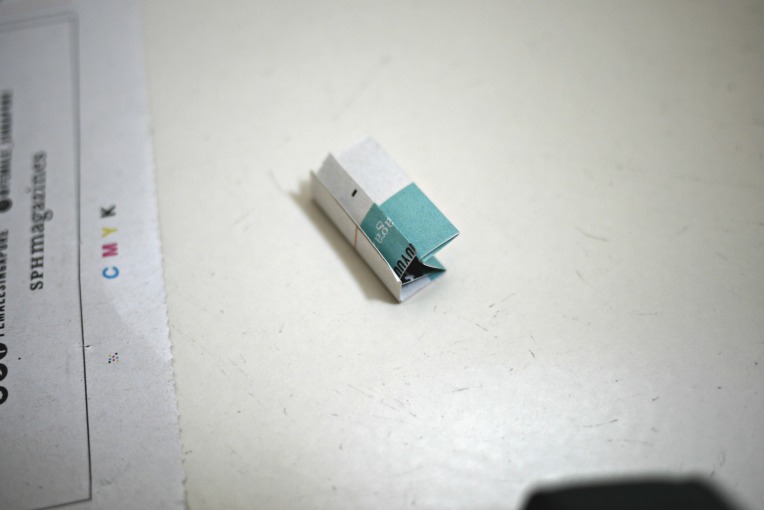
Next, fold it into halves 4 times, so that when you unfold the paper, you get 16 equal parts.

Mark the paper according to the recipe, with 10 parts for water, 1 part for sugar and 3 parts for fruit/vegetable scraps, leaving the remaining 2 parts for an air gap.
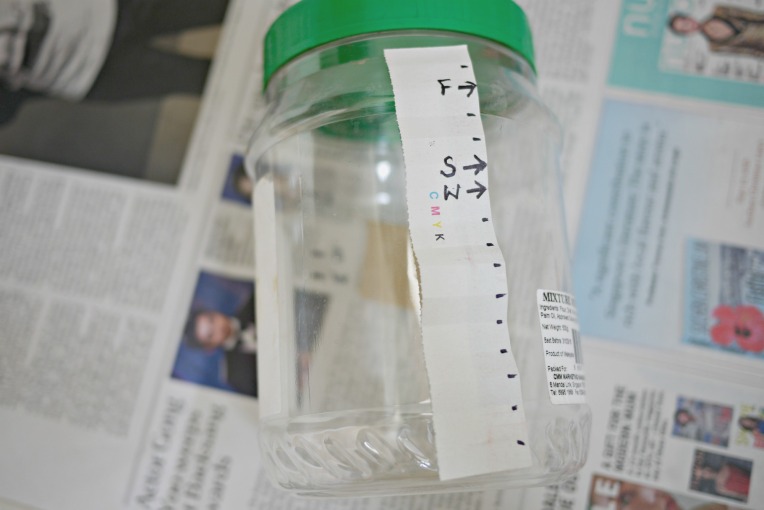
Trace the marks onto the bottle.


Then I add the ingredients in this order: 1. pour water till it reaches the marked “water” level, 2. add sugar until it displaces the water to reach the level marked “sugar”, and finally 3. drop fruit peels and vegetable scraps till the liquid level reaches “food”. Give it a good mix and cover.
+ How does the end product look like?
It should be brownish with a pleasant citrus vinegar aroma. Filter with a cloth bag to retrieve just the liquid portion and store the Eco enzyme in plastic bottles.
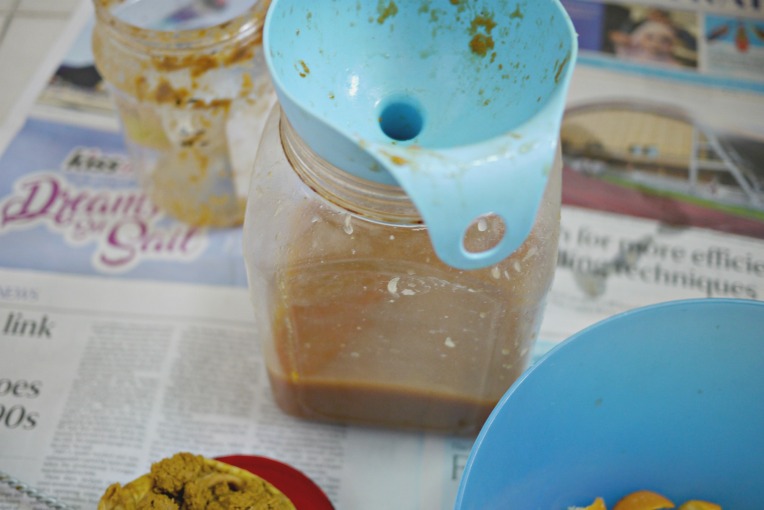
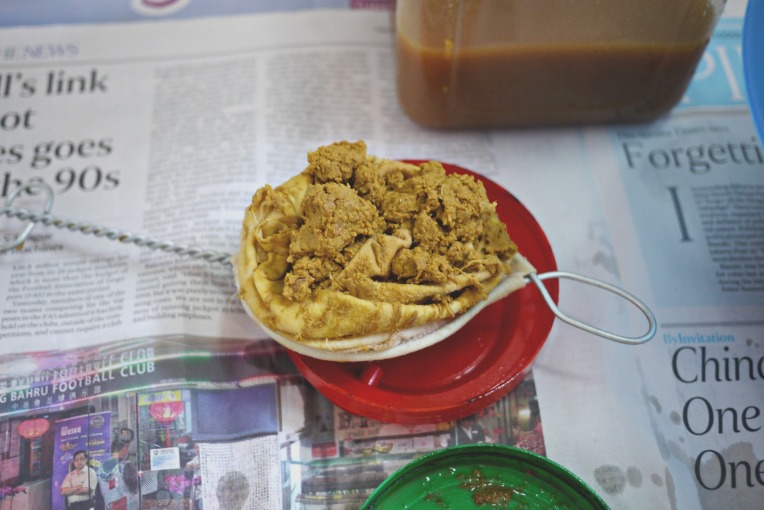


+ How do you use the Eco enzyme?
I have just harvested my initial batch that yields fewer than 2 litres, too precious to be used nonchalantly. I am currently using it to mop the floor, cleaning the kitchen counter and as fertilizer for my plants. This is a list of household uses and dilution instructions for Eco enzyme which I find will come in handy when my next few containers reach their 3-month fermentation target.

Anyone with experience to chip in more? I find myself barely scratching the surface. I am lucky that my first few containers fermented without a hitch. Nothing rot. No terrible smells. Will update as I go along if there is anything worth a mention, both making and using it.

Thanks for this post. I learned something new with the tip on how to measure to make the 1:3:10 ratios without a scale.
LikeLike
Hi Sara,
Glad to be of help! 🙂
LikeLike
Hi, I so happy to know someone like you who are interested in 环保 and natural diy stuffs 🙂 thank you for sharing your knowledge. Would like to ask whether the 苦茶 solution and eco-enzyme solution are suitable for cleaning parquet floors? Hope to hear from you soon 🙂
LikeLike
Thanks for dropping by! I do not have parquet flooring, so it will be hard for me to answer your question. On the other hand, I know that camellia seed powder is not suitable for mopping the floor, as the brown powder be left behind after the water has evaporated. Hope this helps 🙂
LikeLike
Thanks for the post! Very clear and detailed! hope to try making my own eco enzymes soon!
LikeLike
This is intriguing. I wonder if the environmental storage conditions affect the outcome. ie Summer in the tropics or winter in the cold north?
LikeLike
Maybe, but the recipe is really forgiving, my attempts in the topics have been 100% successful. Let me know if you are trying when the temperature is low?
LikeLike
Heading into winter now. What part of the world are you located in?
LikeLike